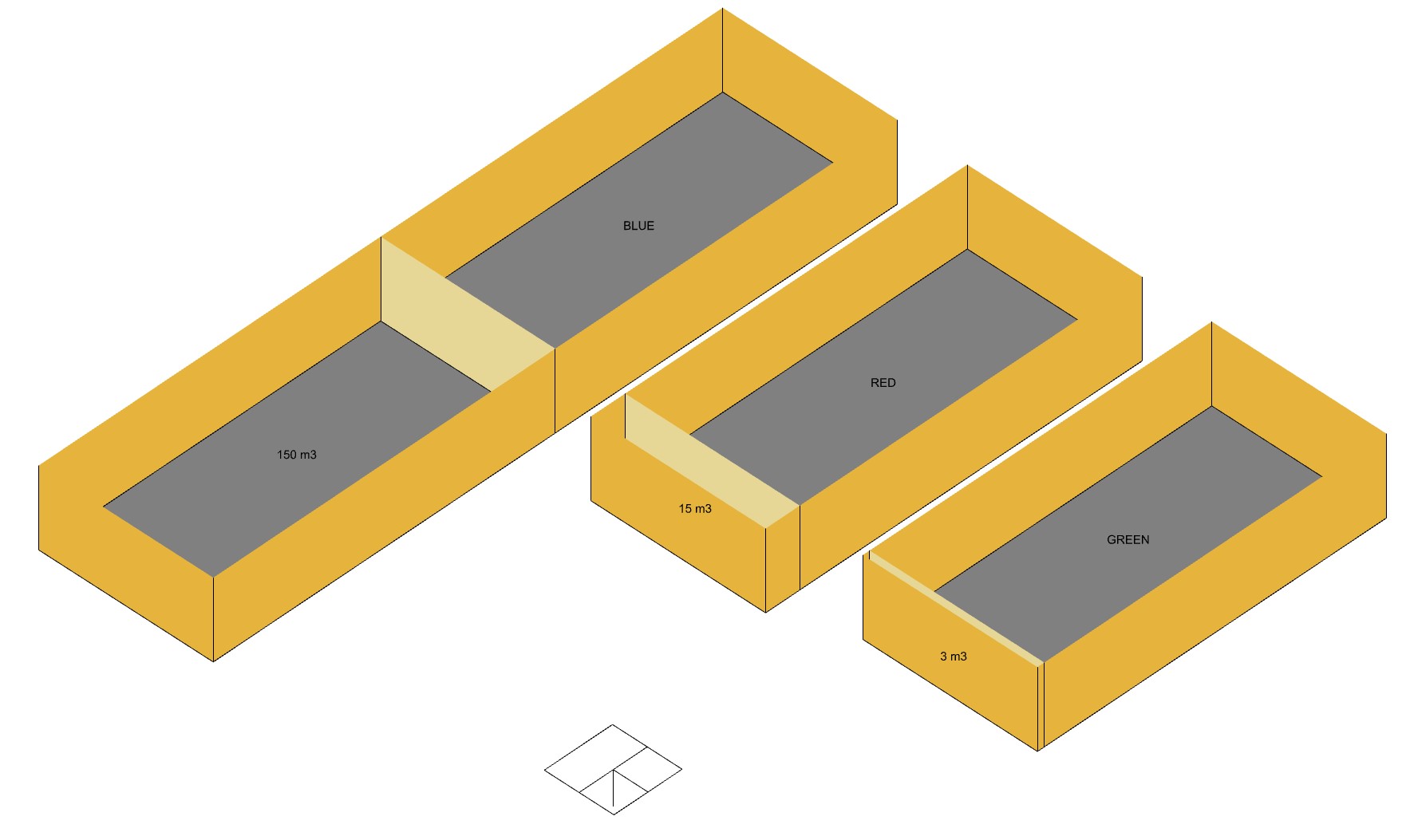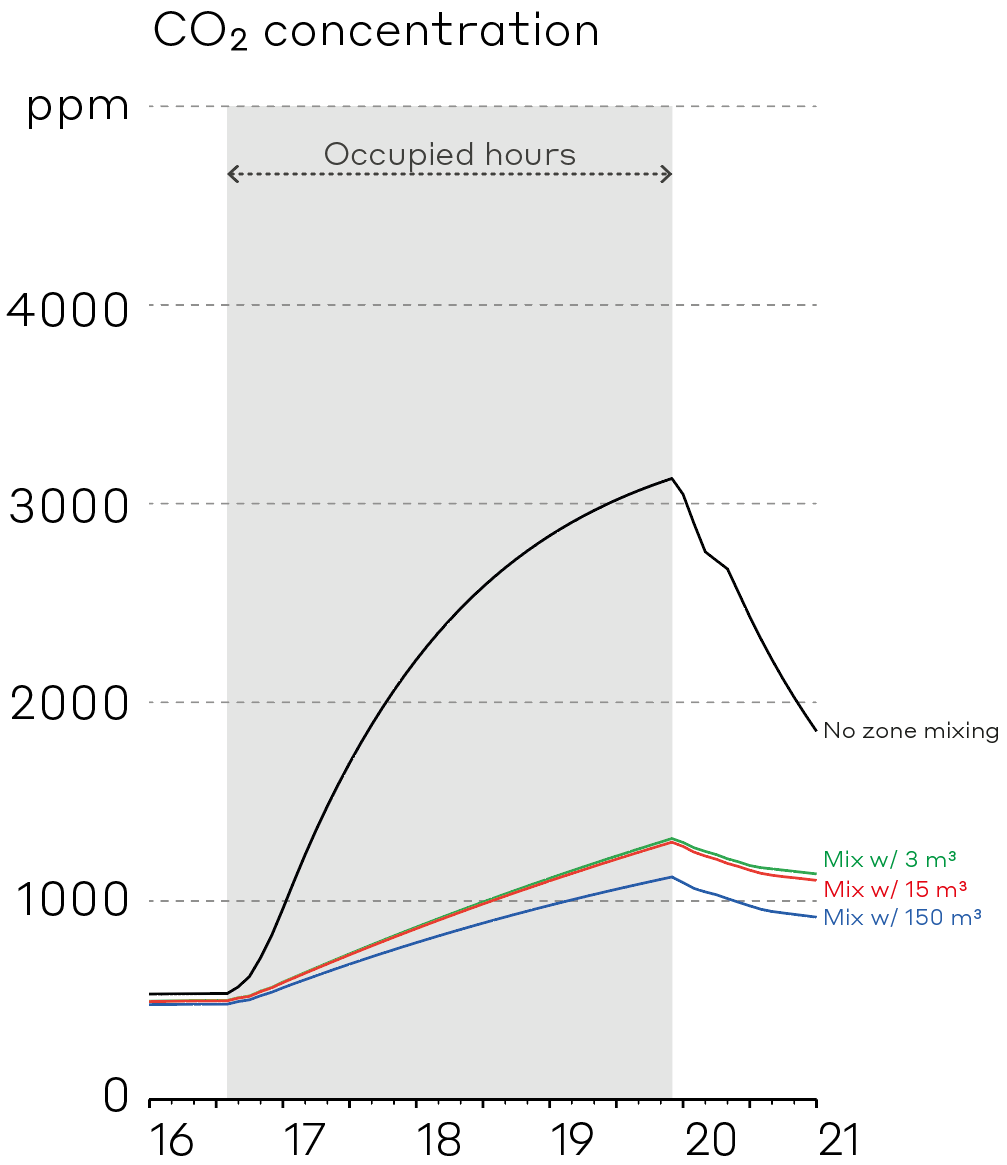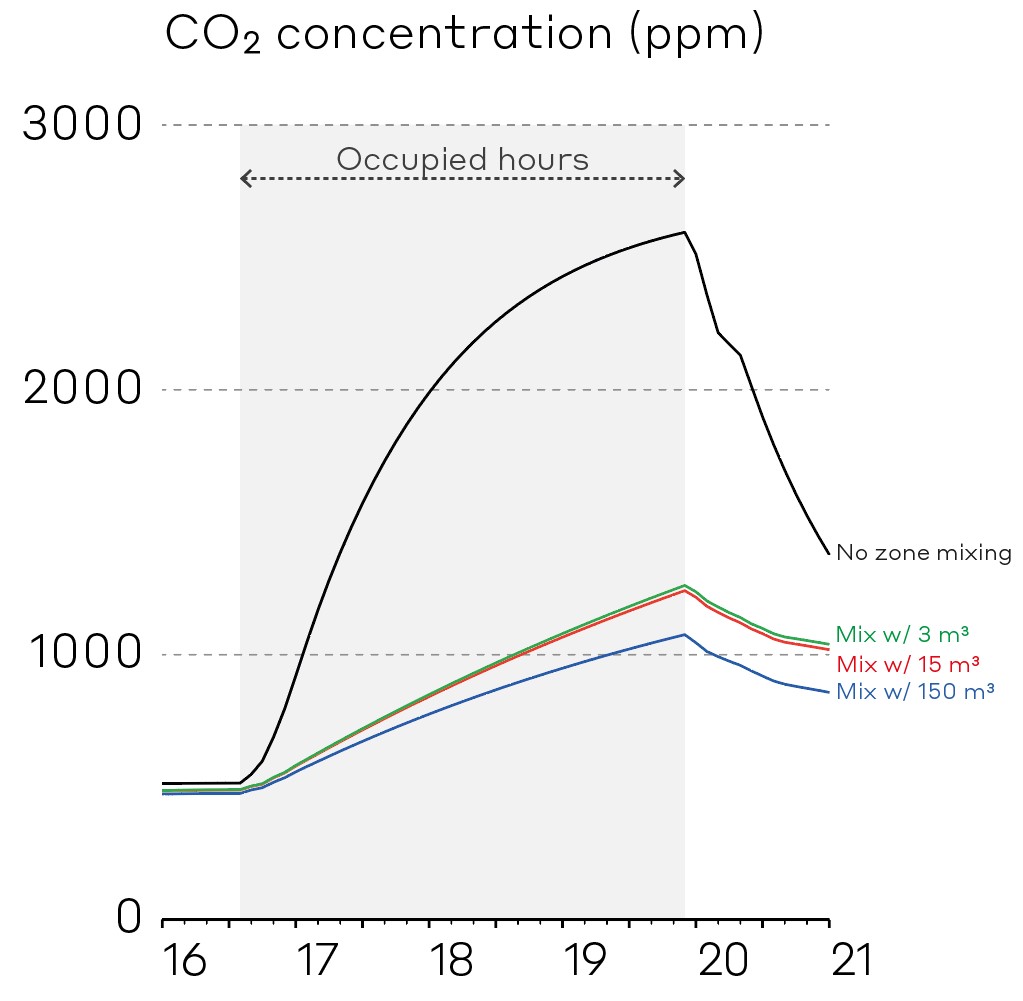Hi,
I’m currently observing unexpected CO2 reductions when connecting occupied zones to empty spaces through inter-zone mixing.
I recreated the problem in a simplified model consisting of one occupied room and an empty volume next to it. I tested the model both with and without air mixing, and tried three different sizes for the adjacent volume: 3 m³, 15 m³, and 150 m³. The fresh air enters only through infiltration (no natural or mechanical ventilation).

The below chart shows the CO2 concentration in the occupied room on a typical afternoon.

It seems strange to me that the CO2 concentration is highly diluted even when connected to a small fresh air volume (3 m³), and that the differences between 3 m³, 15 m³, and 150 m³ are not as significant as the difference between no air mixing and air mixing with a small volume.
I’m wondering if there might be an issue in how E+ simulates the CO2 transfer between zones, potentially leading to an overestimation of the mixing effect, even if the CO2 transfer due to interzone air mixing seems to be correctly accounted for in the zone air CO2 balance algorithm.
Some additional details:
Tested with EnergyPlus 23.2.0 and 24.2.0 (simulation timestep = 12)
Air mixing tested using both ZoneMixing and ZoneCrossMixing objects (same result)
Similar post: Indoor CO2 variation with inter-zone mixing vs no mixing
Looking for feedback from developers or anyone familiar with the CO2 mixing algorithms under these conditions.




